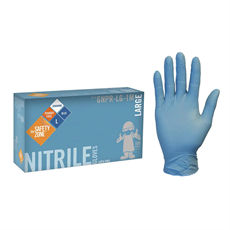Behind closed doors in an operating room, maintaining a sterile field is of utmost importance to ensure the safety of the patient and prevent surgical site infections. Surgical gowns play a crucial role in this process. Here’s a closer look at how surgical gowns contribute to maintaining a sterile field during surgery:
- Barrier Protection: Surgical gowns are designed to act as a barrier between the surgical team and the patient’s sterile surgical field. They prevent microorganisms, including bacteria and viruses, from contaminating the surgical site.
- Aseptic Donning: Healthcare professionals, including surgeons, nurses, and scrub technicians, follow strict aseptic techniques when donning surgical gowns. This process involves thoroughly washing hands and arms, wearing sterile gloves, and carefully putting on the gown to ensure that no part of their clothing or skin comes into contact with the sterile interior of the gown.
- Sterile Packaging: Surgical gowns are typically individually packaged in a sterile manner. When opened, they should be handled with care to maintain their sterility. The gown is unfolded and put on without touching the inside surface, which will be in contact with the sterile field.
- Coverage: Surgical gowns are designed to cover the entire body of the healthcare professional, from neck to wrists and down to the knees. They provide comprehensive coverage to minimize the risk of contamination during surgery.
- Closures: Surgical gowns often have secure closures, such as ties or snaps, to ensure they stay in place and maintain their barrier function throughout the procedure. The closures are designed to be fastened by sterile personnel without compromising the gown’s sterility.
- Impermeable Seams: The seams of surgical gowns are sealed or designed to prevent fluid penetration. This ensures that there are no weak points where pathogens could enter the sterile field.
- Regulations and Standards: Various regulatory agencies, such as the Food and Drug Administration (FDA) in the United States, have established standards and requirements for surgical gowns to ensure their effectiveness as a barrier against contamination.
- Glove Integration: Surgical gowns are typically designed to work seamlessly with sterile gloves, ensuring that there are no gaps or exposed areas between the gown and gloves that could compromise the sterility of the field.
- Sterile Field Maintenance: Once the surgical gown is donned, healthcare professionals must take care to avoid unnecessary movements or contact with non-sterile surfaces. They work within the sterile field created by the gown, surgical drapes, and other sterile equipment.
- Doffing and Disposal: After the surgery, the doffing (removal) of the gown is also done in a manner to maintain sterility. Healthcare professionals carefully remove and dispose of the gown in designated containers to prevent any contamination.
Maintaining a sterile field behind closed doors is a meticulous process that requires strict adherence to aseptic techniques and the proper use of surgical gowns and other sterile equipment. This ensures the safety of the patient and reduces the risk of surgical site infections, which is essential in any surgical procedure.























